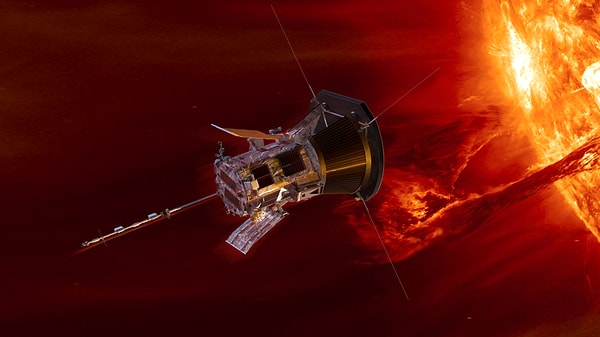NASA is breaking boundaries yet again with its groundbreaking Parker Solar Probe. The spacecraft is on a mission to reach the closest point to the Sun ever attempted—just 6.2 million kilometers away! This incredible journey promises to unlock new discoveries about our star and push the limits of human exploration. Want to know how this daring mission could change our understanding of the Sun forever? Keep reading for the fascinating details!
NASA’s Parker Solar Probe Is Set to 'Touch' the Sun – A Historic Space Milestone

NASA spacecraft prepares to make history by reaching the closest distance ever to the Sun.

In 2018, NASA launched the Parker Solar Probe mission, announcing that the seven-year mission aimed to study the Sun in greater detail than ever before. The goal of this mission is to get closer to the Sun than humanity has ever achieved.
On December 24, the Parker probe will pass within 6.2 million kilometers (3.85 million miles) of the Sun’s surface, setting a new record for proximity.

The spacecraft is expected to reach its closest approach to the Sun today at approximately 2:53 PM Turkish Standard Time. However, during this extreme encounter, the Parker Solar Probe will be exposed to intense heat and radiation, leading to a loss of communication. This blackout may last for several days.
Efforts to reestablish contact with the spacecraft will begin on December 27.
At that point, it will become clear whether Parker survived its close encounter with the Sun. The spacecraft is protected by an 11.5-centimeter-thick (4.5-inch) carbon composite shield, but it remains uncertain whether this shield can withstand the Sun's scorching temperatures of 1400 degrees Celsius (2552 degrees Fahrenheit).
If Parker survives, it will reach a position at the end of January where it can clearly observe Earth.
At that time, it will start transmitting the scientific data it has collected back to Earth. Additionally, Parker will break its own speed record. During its 'dive and escape' maneuver near the Sun, the spacecraft is expected to reach speeds of 690,000 kilometers per hour (428,000 miles per hour).

